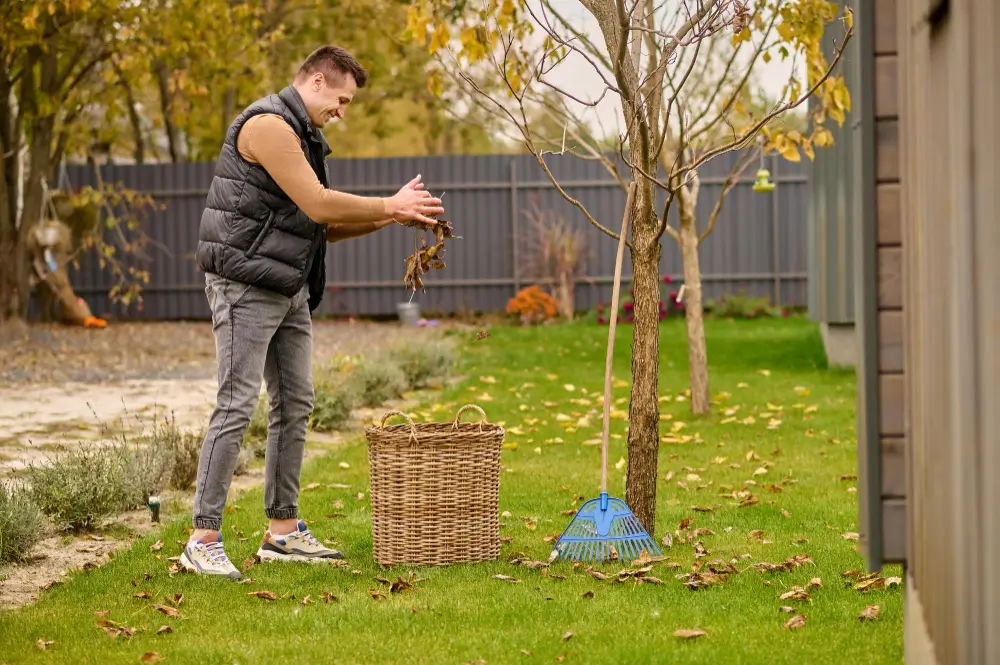
As the temperatures drop and your grass slows its growth, your lawn begins preparing for dormancy—a natural rest period before spring returns. But while your grass might “sleep,” your lawn care routine shouldn’t stop entirely.
Taking the right steps in late fall ensures your turf stays healthy, protected, and ready to bounce back greener than ever. Here’s how to properly prepare your lawn for winter dormancy.
1. Keep Mowing Until Growth Stops
It’s tempting to put the mower away too early, but you should keep mowing until your grass stops actively growing.
Gradually lower your mower height during the last few cuts (without scalping!) to prevent matting and mold during cold weather. For most North Texas lawns, aim for a height of 2–2.5 inches before winter fully sets in.
2. Clear Leaves and Debris
A thick blanket of leaves may look seasonal, but it can suffocate your lawn and create the perfect breeding ground for mold and disease.
Rake or mulch leaves weekly so your grass still gets sunlight and airflow. Clean, debris-free lawns go into dormancy stronger and healthier.
3. Fertilize with a “Winterizer” Formula
Fall is one of the most important times to fertilize. Using a winterizer fertilizer with lower nitrogen and higher potassium strengthens roots and improves cold resistance.
This ensures your lawn stores enough energy to survive the winter and rebound quickly when spring arrives.
Professional lawn care providers like Anointed Lawn Care use timed, pro-grade fertilization designed specifically for winter preparation.
4. Aerate to Relieve Soil Compaction
Compacted soil blocks nutrients, air, and water from reaching the root zone—something you don’t want before dormancy.
Core aeration before winter opens up the soil, improves drainage, and allows nutrients to penetrate deeper. It also helps roots expand and absorb more moisture for winter survival.
5. Apply Pre-Emergent Weed Control
Even when grass growth slows, weeds never seem to rest. Applying pre-emergent weed control in late fall prevents winter annuals (like henbit or poa annua) from germinating and taking over your yard during dormancy.
This keeps your lawn weed-free and reduces the amount of spring cleanup you’ll need later.
6. Manage Moisture Before the Cold
Dry soil can lead to root stress in cold weather. Give your lawn a deep watering before the first freeze to ensure roots are well hydrated.
If you’ve had a particularly dry fall, professional moisture management treatments can help your soil retain water efficiently through winter.
7. Trim Shrubs and Edges
Don’t forget about your landscape plants. Pruning shrubs and ornamentals in late fall removes dead branches and prevents disease from spreading during the cold months.
A clean, well-trimmed landscape not only looks neat—it helps your lawn and plants share nutrients and space more effectively.
8. Avoid Excess Foot Traffic
Dormant grass is fragile. Walking or parking on frozen or wet turf can damage grass blades and compact soil, making it harder for your lawn to recover in spring.
Use designated walkways and avoid unnecessary movement on the lawn during cold or frosty mornings.
9. Schedule a Professional Inspection
Before winter sets in, schedule a professional lawn evaluation. Technicians can spot issues like fungus, compaction, or pH imbalance that might worsen over winter.
Anointed Lawn Care offers comprehensive fall and winter services to keep your turf strong, healthy, and ready to thrive once temperatures rise again.

Winter dormancy doesn’t mean your lawn care should pause—it just shifts focus. With the right fertilization, aeration, and protection plan, your grass will wake up in spring thicker, greener, and healthier than before.
Get ahead of the cold—contact Anointed Lawn Care today for expert winter prep and a free lawn health assessment!









